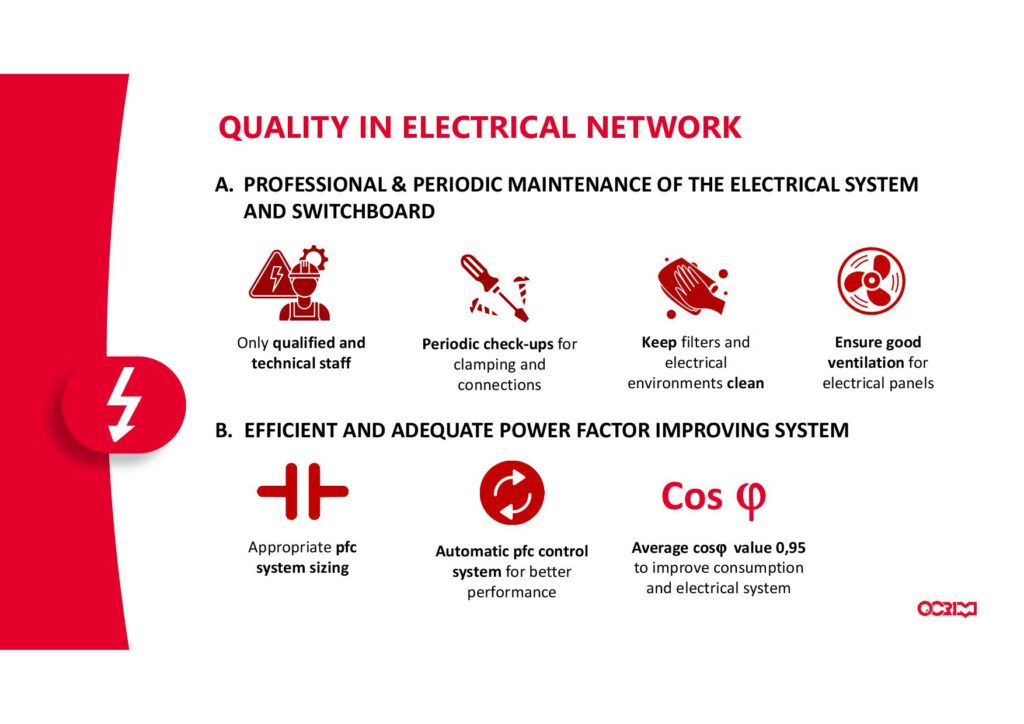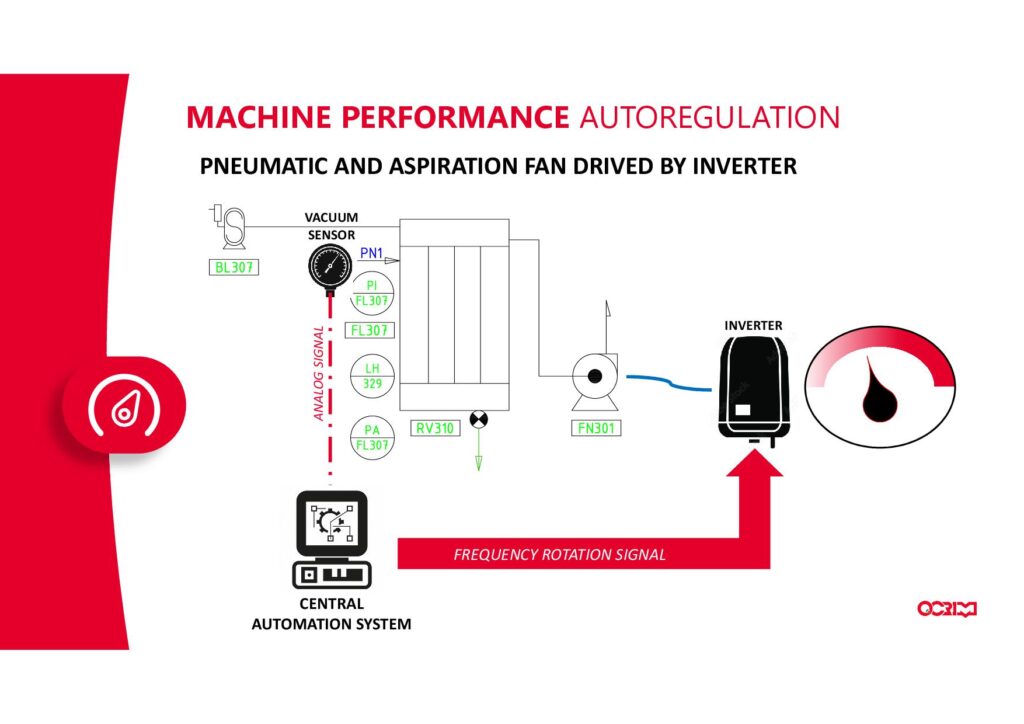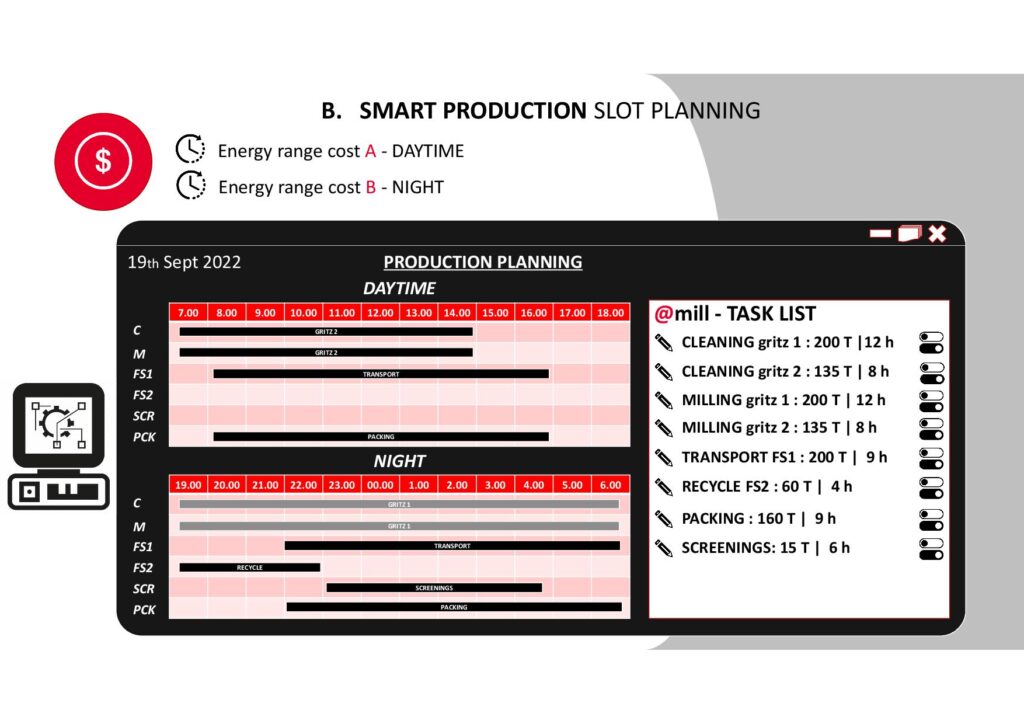How to optimize energy consumption in milling plant without reducing performances? This very topical question was answered by Paolo Molinari – our automation and electrical department manager – during the webinar on 16 November.

Paolo examines a range of topics related to electrical infrastructure and how advanced automation can enhance the performance of equipment and processes. An automation that, being entirely developed by Ocrim, offers the advantage of a customised engineering design to the specific needs of the mill from a management, control, and supervision point of view.
The first rule to be observed concerns maintenance by qualified and licensed personnel. Periodically checking the state of electrical connections, to avoid the occurrence of electric arcs and dangerous failures; cleaning and aerating the switchboard compartment and the rooms that house it; periodically replacing filters to avoid the risk of pollution by substances, inside the switchboards, and to prevent overheating of components and the risk of short circuits are the fundamental cornerstones for maximum efficiency and thus being able to count on a good quality electrical network.
The pneumatic aspiration system is another area where energy losses can be eliminated. By inserting a control sensor into the system circuit, it is possible to monitor its performance in real time by sending data to the PLC, the centralised automation system programmed on the expected performance. This will automatically adjust the fan to the actual performance required.

Paolo Molinari, continuing his excursus of advisable actions to define an energy saving programme, also takes into consideration aspects that are not strictly related to production, but still have an impact on energy consumption. For example, lighting. While it is good practice to adopt LED lighting fixtures, in its latest installations Ocrim is implementing a fully domotics-based lighting system, also connected to the automation system. In addition to installing intelligent sensors in common areas (stairwells, corridors, and bathrooms) to keep the lighting system switched on only for the time necessary for the presence of the person, the intervention that offers the greatest added value concerns the lighting of the various operational floors. By dividing the system into two sub-systems, an initial switch-on – all controlled from the control panel or touch controls on the various floors – will provide sufficient lighting for daily routine operations (e.g. machine supervision, process control, etc.). By activating a second control, the system will instead be supplemented with an additional line to benefit from a greater amount of Lux, in case extraordinary operations have to be carried out (opening the machine, changing parts, or making adjustments).

At this point, Paolo gets to the heart of the solutions proposed by Ocrim, as what has been outlined above are just examples of spot interventions that can be done. To design a comprehensive and innovative energy saving programme, we need concrete data that consider the mill’s actual production and consumption. Otherwise, solutions will always be partial and economically unproductive. Ocrim has a plant management system that collects all production data, including energy consumption. By equipping all switchboards with intelligent multifunctional instruments (for collecting consumption data) networked together and reporting to our automation system, it is possible to have constant reports of production-related electricity consumption, which can be filtered according to the desired period (daily, monthly, hourly, weekly). To make intelligent use of these data, the system itself, appropriately programmed, will provide a time grid that will indicate, for example, in which time slots it is most convenient to enter production cycles, or what to do when the plant’s maximum absorption threshold is exceeded for a certain significant period of time. In this way, the operator will have a global overview to understand which processes are not priorities that can be postponed or suspended and to evaluate all those activities that, in real time, can be downsized to contain consumption. Figures show that, by estimating costs over two-time bands and shifting certain processes from daytime to nighttime, there is a saving of approximately 35% compared to the amount that would be shown on the energy bill.
Concluding, Paolo Molinari emphasises how important the role of automation is in identifying very interesting savings segments. There are numerous installations made by Ocrim that, thanks to the customisation and extreme flexibility of this system, are producing tangible results on all mill sizes.



